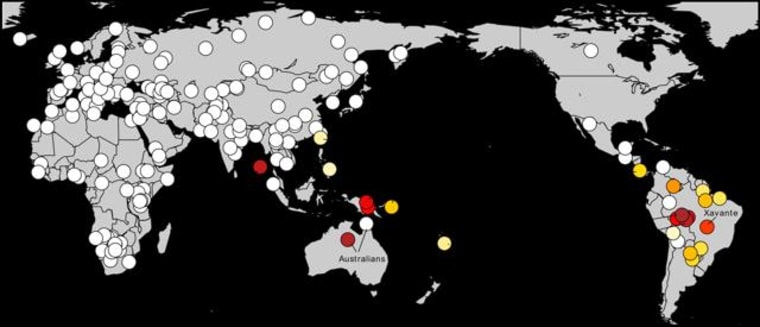Scientists have discovered a previously unknown source of ancestry for some native peoples in Brazil, suggesting a new wrinkle in the story of the settlement of the Americas. The finding does not change the broad outlines of what scientists believe: that the Americas were settled by people who crossed a now-submerged land bridge from Siberia to North America more than 15,000 years ago. Then they made their way south, and their DNA has been found in native peoples. This founder population drew its heritage from Siberia and people related to modern East Asians.
Now, DNA from modern-day people indicates that another population also crossed the land bridge and contributed to the heritage of some modern-day natives of Amazonian Brazil, researchers say. This second group, dubbed "Population Y," had its roots in an Asian population that no longer exists, but which also left a genetic fingerprint in modern native peoples of Australia and New Guinea, said David Reich of Harvard Medical School. He reported the work with colleagues in a paper released Tuesday by the journal Nature.

Population Y provided only a fraction of the DNA now found in the Amazonian peoples. It's not clear when they left the land bridge, in comparison to the previously recognized immigrants, Reich said. But they clearly arrived in Amazonia long ago and it should be considered a second founder group, he said.
Related: North and South America Came Together Much Earlier Than Thought: Study
The paper provides the first robust evidence that some native populations of the Americas trace part of their ancestry to a second source, said Deborah Bolnick of the University of Texas at Austin, who was not involved in the work. It suggests that the history of the native populations "is more complicated than previously thought," she said.
A second study, released Tuesday by the journal Science, detected a similar signal in an Amazonian native group, as well as Aleutian Islanders. But the researchers concluded the DNA showed up relatively recently, after the initial peopling of the Americas.